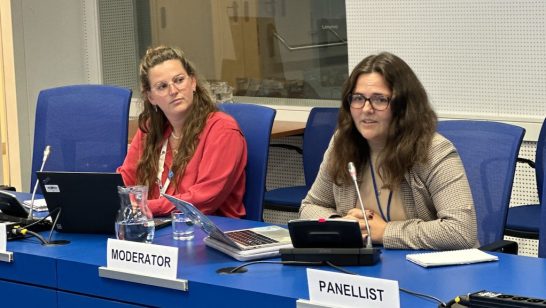
Traditional nuclear deterrence has, at least to some extent, contributed to the absence of great power conflict since the end of WWII, an argument long advanced by realists that persists to this day. Yet amidst a complex modern landscape marked by the emergence of a myriad of new, non-nuclear strategic threats (NNSTs), many of which lack the clear red lines and decades of normative taboo of their nuclear counterparts, the stabilising impact of deterrence appears fragile. States should look beyond nuclear deterrence and towards innovative public-private frameworks and resilience-building to deter and mitigate emerging NNSTs.
Defining non-nuclear strategic threats
There is no single, definitive classification of “non-nuclear strategic threats,” which contributes to the difficulty of developing actionable policies to deter them. “Strategic” implies threats that endanger critical elements of a state, curtailing its ability to pursue its interests and provide for its citizens, or even threatening its existence. While nuclear war has long been labelled a strategic threat, the 2018 US Nuclear Posture Review also made reference in passing to “non-nuclear strategic threats, including chemical, biological, cyber, and large-scale conventional aggression,” a definition that has been largely adopted since.
This leaves room to interpret both threats which already have some constraining mechanisms – such as biological and chemical weapons – as well as an array of other emerging and disruptive technologies (EDTs), which do not. Binding elements that help group them may include a lower threshold of access versus nuclear weapons and, with those limited exceptions, a lack of normative or institutional guardrails against their possession and use. It is also important to look beyond the military or counterforce lens that is often applied to EDTs and consider the potential human security and civilian impacts that may be more marked.
Why is deterrence important?
NNSTs often have dual-use purposes – biotechnology or AI, for example – raising questions about to what extent deterring them is necessary. But in both military and non-military realms, managing these threats is essential to continued global strategic stability and domestic security. Some of these threats also maintain counterforce value, meaning they could weaken or even immobilise aspects of critical national defence infrastructure and even undermine deterrence among nuclear weapon states. The resulting loss of security for these states – a security dilemma – could prompt fresh and unchecked arms races, a fact often levied against missile defence technology, which falls into the NNST bracket.
In the human security realm, these threats may also have countervalue functions, whether intended or not. Biological weapons, for example, were largely seen to only have limited strategic use on the battlefield. However, the COVID-19 pandemic has highlighted the destructive potential of bioweapons to both public health and national economies, as well as their destabilising effect on society through uncertainty and polarisation. Unlike nuclear weapons, approaches to deter NNSTs must account for these additional capabilities.
There is no one-size-fits-all solution to successfully deterring and mitigating this diverse set of non-nuclear strategic threats. But by unpacking the term as above, some realistic options emerge.
Renouncing nuclear deterrence
Utilising nuclear weapons to deter NNSTs has been the instinctive response from several nuclear weapon states. However, these states must look beyond their usual toolkit to address these new threats; increasing ambiguity around nuclear weapon use, rather than diminishing it, is not the solution. Recent US and UK statements that they would consider using nuclear weapons in response to attacks utilising “emerging technologies that could have a comparable impact,” or “other high consequence, strategic-level attacks,” without ample configuration as to what this means, are misplaced declarations that threaten to make nuclear war more likely by both reducing the threshold for nuclear weapons deployment and diminishing the deterrent value of the weapons.
Nuclear deterrence has been successful, to date, by relying on clear attribution and signaling, as well as a healthy dose of luck. The inclusion of NNSTs, especially emerging and disruptive technologies, muddles these calculations and obscures these clear red lines. Until these are firmly established and entrenched in deterrence language, nuclear weapons should not be an option to deter NNSTs.
Resilience
Nuclear deterrence, or any kind of “deterrence by punishment,” relies on the premise that nuclear threats can be explicitly attributed. However, the NNSTs outlined above are available to a broad range of actors, and their use is not always easily attributable. Weakening an adversary’s hand by increasing one’s own resistance to these threats, however, is a conceivable option to diminish their interest in using them. A “deterrence-by-denial” option, which has often been judged as unfeasible or potentially destabilising in the nuclear realm, offers a way to diminish some non-nuclear strategic threats.
Biosecurity provides a potential litmus test for such a strategy. Improving the availability of medical countermeasures, scaling up early-warning systems, and stockpiling critical equipment are some realistic options, and technologies to do so are already at hand. The COVID-19 pandemic has shown the value of stockpiled personal protective equipment and quick, scalable vaccine production capabilities, both of which can be tremendously improved. Research and development of technological solutions, such as pathogen early warning systems or far-UVC technology, would help ensure the detection and mitigation of future biothreats.
Where biothreats blur the line between military and civilian domains, the same is true for these defensive measures, which not only increase resilience against deliberate biological threats but also improve public health in the face of natural or accidental outbreaks. Similarly-minded strategies, albeit deploying very different approaches, could help shore up national resilience against other emerging threats, particularly in the cyber realm.
International Treaties, Frameworks and Agreements
Arms control agreements have limited the potential use, whether intentional or accidental, of nuclear weapons by fostering strategic stability while reducing nuclear warhead arsenals by 81%. While international agreements and normative frameworks remain an important part of addressing NNSTs, new measures must look beyond the traditional bilateral model of nuclear arms control.
Global collaboration is imperative, but to seize the initiative, such cooperation should first engage a core group of states at the forefront of these technologies. Honing a more systematic approach to managing the risks posed by NNSTs like artificial intelligence should be driven by leaders in these nascent technologies, including the US and the UK, who have both the domestic expertise and international leverage to do so. The latter should seek to use the AI Safety Summit in November to advance measures to deter harmful uses beyond the sorts of “best practices” that already exist, but that fail to enshrine legally binding requirements.
Wealthy nation-states are no longer the sole proprietors of technologies driving strategic threats, however. The private sector now wields considerable responsibility – both in traditional defence policy, as well as in developing dual-use technology like advanced AI. Leveraging the wealth of private actor knowledge and expertise is necessary for success, especially as governments struggle to keep up with the pace of development. For instance, in preparation for the aforementioned AI Safety Summit, the United Kingdom is collaborating with leading private AI companies, who provide deep model access to their foundational models for UK researchers to use.
Keeping private and sub-state actors accountable under new legal frameworks is integral to their success. National implementation could be modelled after the Biological Weapons Convention (BWC), which mandates state parties to integrate BWC provisions into national law and enforce it. While this continues to be a contentious topic even over 50 years after the BWC’s entry into force, concrete proposals like a common code of conduct for scientists or the systematic review of advances in the life sciences have gained traction.
Inversely, the failure of the BWC Verification Protocol in 2000 also shows how a lack of private sector buy-in can hinder the development of an international agreement. Earlier involvement of the private sector could have potentially prevented issues further down the line.
Many of the NNSTs discussed are united by the fact that, unlike nuclear weapons, their development and utilisation extend far beyond the military realm. The list of stakeholders to engage in deterring malicious use of biotech, cyber, and AI technologies is ever-expanding. Many questions remain for ongoing discussion. Where will these actors, and indeed states, draw the line between restraint and innovation? Can private actors be trusted to restrain themselves, and are governments willing to do it for them? These questions demand answers while these NNSTs are nascent and thus more ‘manageable’.
Conclusion
The range and definition of non-nuclear strategic threats are fluid and highly subjective. How individual states at the apex of their proliferation define and treat them, and one another, matters most. Unlike nuclear weapons, traditional deterrence-by-punishment and bilateral arms control agreements will not suffice to prevent the malicious elements of these threats from derailing strategic stability.
States at the forefront of these threats must lead by example, mapping their resilience domestically while driving legally binding practices that engage not just the international community but also the countless private sector actors spearheading their development and utilisation. They must also refrain from falling back on nuclear weapons as the answer. Ultimately, the picture is vastly complex and rapidly evolving. There is no one-size-fits-all approach to deterring NNSTs, but these recommendations provide a jumping-off point to harness the interest and engagement of civil society discussions around doing so.
The opinions articulated above represent the views of the author(s), and do not necessarily reflect the position of the European Leadership Network or any of its members. The ELN’s aim is to encourage debates that will help develop Europe’s capacity to address the pressing foreign, defence, and security policy challenges of our time.
Image credit: Wikimedia Commons / Nuclear Missile Strike – Huntster – Steve Jurvetson




